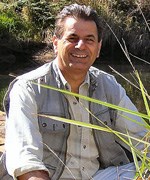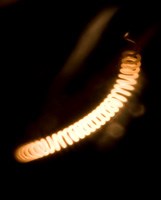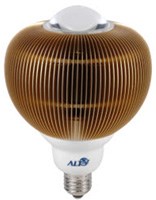






How many Chinamen does it take to change a light bulb? Well the way technology is developing, light bulbs may not have to be changed at all in future!
Providing they're LED of course!
In the end it all boils down to energy management. Whether we like it or not, this is the immediate challenge for South Africans today. If we fail to tap proactively into alternative energy solutions, we'll suffer increasing inconvenience and find ourselves in financial hot water sooner than later.
In the residential domain, lighting may not be the primary energy consumer. Hot water, cooking and space heating comprise the bulk of your electricity bill. However, in the commercial and industrial sectors lighting can easily take up a massive portion of the electricity account.
Enter the light emitting diode ... latest warrior of the light!
They've been winking at us for years and by now everyone has come into contact with LED technology. For years we've seen indicator lights on TVs, sound systems and electronic systems, Christmas lights and more recently car tail and headlights. Over recent years solar powered traffic lights and billboards have made their appearance, using LED lights which come in a range of colours. Lately LED technology has taken a step up to what are now termed high-powered LEDs.
These include powerful floodlights and hi-bay lighting used in large warehouses and which use a fraction of the electrical energy, but deliver the same lux levels.
LEDs are clearly heading for a brighter future, and apart from specialised applications, nothing can compete with them!
Unique to LED lighting is the fact that the source of light is not a filament, gas discharge, or arc, but rather a semiconductor.
Unlike an incandescent light bulb, light in the LED arises in a tiny photonic cloud between the positive and the negative electrodes of the diode. The power to this LED is delivered by a power supply or a driver that has to be 'intelligent'. This is what actually determines the output and durability of an LED.

For electrical contractors, saving energy by replacing traditional incandescent bulbs with more energy efficient light sources has become common practice in recent years. ESKOM recently spent millions on giving out free compact fluorescent lights (CFLs) to the public in exchange for the inefficient tungsten variety. In spite of the current popularity of CFLs, an increasing number of energy-conscious consumers are upgrading yet again to LED technology.
According to Phil Hammond, Cape Town-based Illumination Engineer: "LEDs are nearly 8 to 10 times more efficient than incandescent lights and certainly twice as efficient as fluorescent lights."
Hammond, who's on the committee of the Illumination Engineering Society of SA in Cape Town, adds that LEDs convert virtually all of their energy into light with little energy wasted to heat. Incandescent bulbs, on the other hand, only convert 10% of energy into light while the rest of this costly energy is given off as heat. In addition, the heat given off by incandescent bulbs increases the cost of air-conditioning, a vital consideration in a heavily lit commercial or industrial environment.
As the magnified photo shows, the fragile filament in an incandescent bulb is very similar to a heating element.

Durability is also behind the popularity of LEDs. Unlike older technologies, LEDs have no breakable glass or filament and have longer life spans. An LED can burn for 50 000 hours compared with a typical CFL life-span of between 5000 and 15 000 hours. Traditional incandescent bulbs don't come close, and generally last for less than 1000 hours. Just think of those ubiquitous halogen down lighters which only last for a few months. Now dimmable LEDs are coming out!
However, the benefits of LEDs don't stop at efficiency. In addition to drastically reducing electric bills, LEDs do not contain harmful toxins such as mercury as CFLs do. Should a CFL bulb break, mercury, a harmful neurotoxin, is released which can be harmful to both our health and the environment.
LEDs may run cooler than other luminaires, but they still generate a small percentage of heat energy. Heat being the biggest killer of LED's, much research has gone into the design of effective heat sinks to carry the heat away from the unit. Aluminium is one of the better heat dissipation materials at present. Think of a heat sink as the radiator of a car.
Companies with a strong semi-conductor history are now coming to the fore. For example ALT( Aeon Lighting Technologies) as part of Super Micro, (NASDAQ listed international electronics giant), is arguably one of the leading lighting companies in terms of efficient and reliable LED designs.
The below photo shows a high powered ALTSA LED unit, designed for commercial use. Note the efficient fin design for cool running. This is crucial for long life. As a rule of thumb if you remove an LED once it's reached running temperature and cannot hold it by hand, then it's running too hot, won't have a long life and is probably not a high quality unit.

The lighting industry in general expects LED costs to come down steadily. ALTSA CEO, Gerhard Moolman predicts a 50% price reduction within two years. A major migration to LED is busy happening as businesses with high lighting expenses, realise the rapid return on investment. However, homeowners may have to wait a little longer until LEDs reach the price levels of current incandescent units.